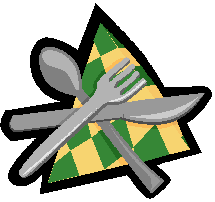
Here’s a great opportunity to connect with numbers when you are in the kitchen with your child. This learning by doing activity will help your child to understand the meaning of counting and provide the basic concept of addition and subtraction, all while helping to lay the table.
- Counting forward, only verbal
![]()
![]()
Walking to the table one step on a tile, while counting the steps out loud.
Take a plate/cup and model walking to the table one step on a tile, while counting the steps out loud. Ask your child to do that too. Make it a fun activity: hop, tiptoe, sing, whisper, etc.
No Tiles? You can redo your kitchen floor or try large colored stickies (plain) in a straight line on similar distances from each other.
Hand out plates, cups, cutlery one by one to your child, who is standing on the very tile in front of the cupboard or dishwasher and ask her to count the steps to the table. Maybe one setting is further than another: hurrah, more counting possible!
- Counting backward, only verbal
Count out loud backwards with each step walking back to the cupboard to get the next plate/cup.
After doing this for several days (weeks for a younger kid), model to count out loud backwards with each step when she walks back to the cupboard to get the next plate/cup.
Usually a lot of help is needed at this stage, so don’t rush. Some younger kids will start counting up from one, arrive a number too far and recite the previous number from their auditory memory, this is fine. Obviously you praise the effort to do this difficult new task!
What does she say for the last step back to the starting tile? Anything like: “I’m back” or “back to start”, or “back at base” indicates that she ‘gets it’, and later on you can introduce the word zero for this tile.
- Counting with written numbers

And yes, even this is going to get boring, meaning it is ingrained in long term memory and your child’s brain is ready for the next concept. So far we have only counted steps from the start to the destination, and mentioned what the total number of steps forward or backward was.
- Counting by adding steps to arrive at a total
Now we are going to explore every possible combination: you are stepping and counting and your child will call STOP anywhere between cupboard and table. Make it fun: act surprised or jump, before you show how many steps you did (point at the number on the sticky, let’s say it’s 2) and ask your child to guess how many steps she thinks you still need to go to arrive at the table (let’s say 3). Now count these steps saying: “one more”, “two more”, etc. because you want to stress that the number on the sticky you stand on is not the same as the number you count out loud. When you arrive at the table you say: “I went to 2 first, stopped, than 3 more steps, and now I am at 5. It’s your child’s turn, take turns calling stop and guessing and throw in the extra praise.
- Counting backward to arrive back at start

Model stepping and counting out loud backward, have your child call STOP and guess how many more steps are needed to arrive at start/base/zero (choose the word that works for your child).
When you count say: “one back”, “two back” or when your youngster shines with the blank staring look of feeling lost, help her out by mentioning the stopping point: “one back from …”, “two back from …”. When you arrive at the starting tile, say: “First, I went 2 steps back, stopped, than 3 steps back, and now I am back at start.
Like with counting up, when you encouraged your child to explore all possible combinations of steps in the forward direction, you are now going to try out all possible combinations to get back to start.
Take turns and do some silly guessing like 10 more steps back to get the laughing bones in action.
- Make it a fun activity

Make obvious mistakes in guessing the number of steps, ask her why that guess could never be right and laugh together about the silly numbers. Go back often to a previous bulleted activity to help memorization. The ‘Rule of Thumb’ in teaching something new is to have your child combine four easy with one hard/new one. Remember not to expect her to be right all the times from the beginning and make it safe to err. You even want her to make mistakes, so you can show her that that is OK. This way you help her being comfortable to ‘stick with it’ when it gets difficult (needed for later success in STEM).
Try it outside on the pavement tiles and stay on the lookout for any other tiled opportunities.
- Praise the effort not the result.


